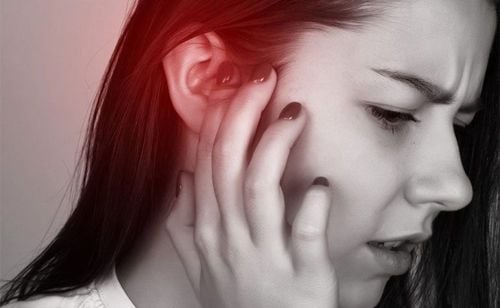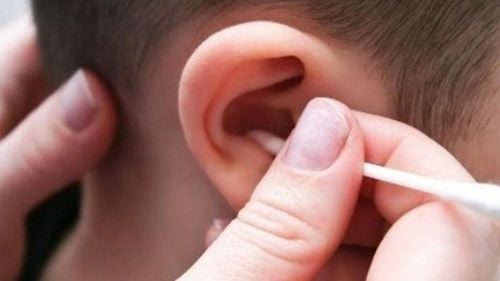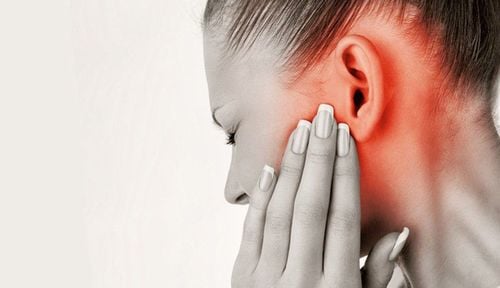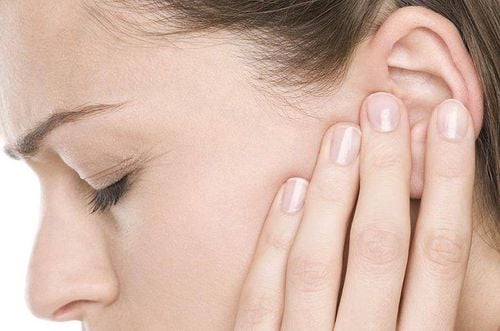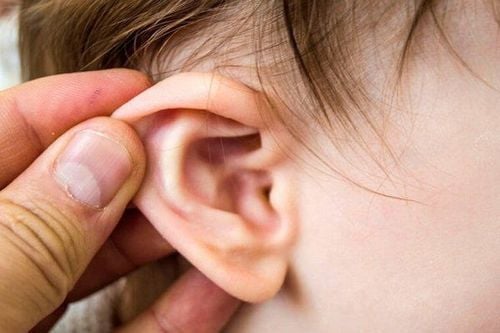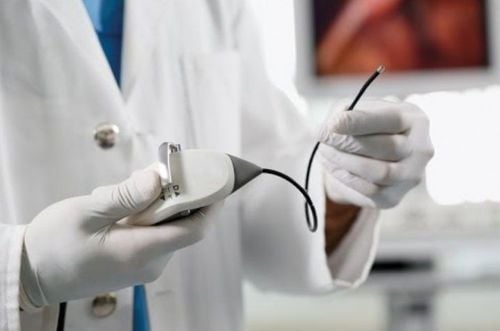This is an automatically translated article.
The article was professionally consulted by Specialist Doctor of Otolaryngology - Department of Medical Examination and Internal Medicine - Vinmec Ha Long International Hospital.
Inner ear disorder is an ischemic or blocked blood vessel, which leads to unstable blood flow to the inner ear. The cause of ischemia or vascular occlusion may be due to changes in the pressure and volume of the labyrinthine fluid, and this accumulation is often unknown. Instead, there are several risk factors for this accumulation of endolymph such as a family history of Meniere's disease, autoimmune disorders, allergies, etc.
1. What is an inner ear disorder?
The inner ear is the part located in the stony area of the temporal bone. Inside the coccyx is the bony labyrinth, which surrounds the membranous labyrinth. The bony labyrinth includes the vestibular system and the cochlea. Specifically:
Vestibular system: This is a part with balance and posture functions, including semicircular canals, cysts, and spokes. The cysts and cysts contain cells that sense head movement in an up and down or vertical direction. The semi-annular tube senses the rotation of the head. Cochlear: This is the part responsible for hearing, inside the cochlea contains foreign fluid and hair cells. Nerve fibers from the hair cells enter the periphery and are embedded in the gelatinous membrane. Sound vibrations are also transmitted from the ear canal, through the middle ear and the window into the inner ear, at this location the vibration will cause the external fluid to move and the hairs to vibrate, then converted into an electrical signal and sent to the inner ear. to the brain. Inner ear disorder, also known as inner ear circulatory disorder or inner ear vasomotor disorder, is a phenomenon of ischemia or blockage of blood vessels, which leads to unstable blood flow to the inner ear. . Because blood vessels are responsible for providing oxygen, fluids and energy to different parts of the human body for the body to function properly. However, the blood vessels in the inner ear are similar to any other blood vessels in the body. The inner ear often uses energy, so the blood supply to the ear is very important, but due to some reason, the blood flow in the inner ear is unstable, thereby causing people to suffer from inner ear disorders. .
Inner ear disorders that prevent blood vessels from supplying energy to the hair cells in the inner ear. These hair cells are responsible for sending sound signals to the brain, so disorders of the inner ear will cause hair cells to not work effectively, thereby causing tinnitus, hearing loss, and knife damage. movement of the eardrum, which can gradually cause complete deafness for the patient.
2. Causes of inner ear disorders
As analyzed, an inner ear disorder is an ischemic or blocked blood vessel, which leads to unstable blood flow to the inner ear. The cause of ischemia or vascular occlusion may be due to changes in the pressure and volume of the labyrinthine fluid, and this accumulation is often unknown. Instead there are several risk factors for this accumulation of endolymph:
Having a family history of Meniere's disease, an autoimmune disorder; Patients with allergies, trauma to the head or ears; In some very rare cases, syphilis can be a predisposing factor to inner ear disorder syndrome; In addition, inner ear circulatory disorders can also be caused by a number of other factors such as foreign bodies in the inner ear, ear inflammation or infection, labyrinthitis, auditory neuritis and vascular occlusion, .. .
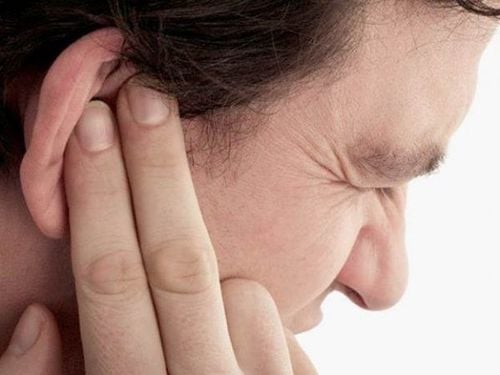
3. Signs and symptoms of inner ear disorders
When there is an inner ear vasomotor disorder, the patient usually has vertigo episodes lasting from 1 to 6 hours, a few cases of dizziness can last up to 24 hours accompanied by nausea and vomiting, and sweating. sweating, diarrhea, and unsteadiness. In addition, people with inner ear circulatory disorders may also have the following symptoms:
Tinnitus: Tinnitus symptoms often appear in the affected ear, this symptom may be continuous or prolonged. The patient feels an insect-like buzzing or rumbling sound. Hearing impairment: This symptom usually affects low frequencies. Most patients feel fullness and pressure in the affected ear. In the early stages of an inner ear disorder, symptoms shift between episodes, and the time between episodes usually causes symptoms to last for more than 1 year. However, if the disease is more advanced, the signs of hearing loss persist and gradually get worse, and tinnitus does not change.
4. Diagnosis of inner ear disorder syndrome
Usually, the diagnosis of inner ear circulatory disorders is based on clinical symptoms. When a person has signs of hearing loss, intermittent dizziness, a feeling of fullness and ringing in the ears are typical symptoms of the disease. Symptoms of inner ear disorders are often similar to those of vestibular migraine, viral labyrinthitis or vestibular neuritis, and stroke. Therefore, in order to make a definitive diagnosis, the doctor will prescribe the use of other testing methods such as:
Due to audiogram and MRI with intracranial magnetic contrast injection. The audiogram method will show low frequency reception hearing loss in the diseased ear. Fukuda stomping in place with eyes closed: This test is often indicated to differentiate from meniere attacks. However, if it is a long-term or persistent case with decreased labyrinthine function, it will cause the patient to turn towards the affected ear. Halmagyi test or head thrust test: This is considered a technique used to show unilateral labyrinthine disorders. With this test, the patient will look directly at a target straight ahead, then the nurse will quickly rotate the patient's head 15 to 30 degrees to the side and then observe the patient's eyes.
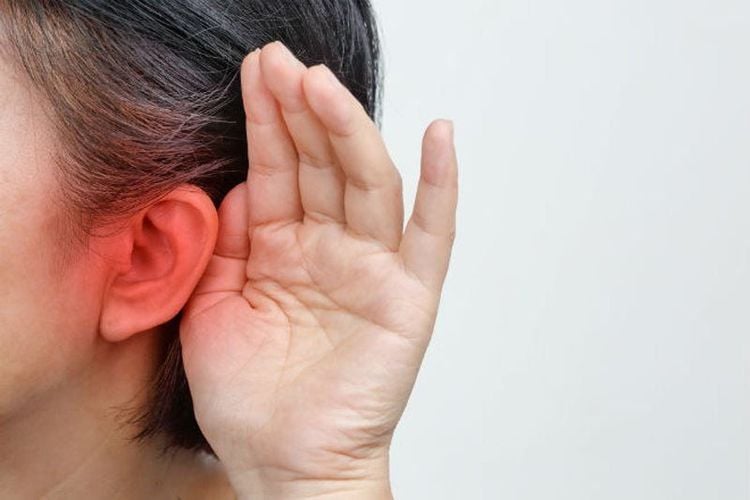
5. Treatment of inner ear disorder syndrome
Meniere's disease tends to be self-limiting, and if the person is in an acute episode, the mainstay of treatment is symptom relief. These include:
Use of anticholinergic antiemetics to relieve gastrointestinal symptoms. In some cases, antihistamines such as meclizine, cyclizine 50mg orally every 6 hours or benzodiazepines can be used to calm the vestibular system. However, antihistamines and benzodiazepines are not as effective as prophylaxis. A course of oral or transtympanic corticosteroids dexamethasone in the case of acute inner ear disorders or a diuretic such as hydrochlorothiazide 25mg can prevent and relieve symptoms of dizziness. Follow a low-salt diet (under 1.5g/day), avoid alcohol, coffee. In addition, when functional conservative treatments fail, destructive surgical methods will be considered to indicate treatment. Gentamicin is injected through the tympanic membrane but requires monitoring with an audiogram to monitor patients with hearing loss; Gentamicin injection may be repeated in 4 weeks if the patient still has symptoms of dizziness but no hearing loss. .
Further, destructive surgery is indicated for treatment only in patients with severe exacerbations and unresponsive to minimally invasive modalities. In addition to surgery to cut the vestibular nerve to relieve vertigo as well as preserve hearing, surgery to destroy the labyrinth should only be performed if the patient is profoundly deaf.
However, with inner ear disorders there is usually no way to stop the natural progression of hearing loss. Consequently, most patients experience moderate to severe hearing loss in the affected ear within 10 to 15 years.
To examine and treat ENT problems in general and inner ear disorders in particular, you can go to the Ear - Nose - Throat specialist - Vinmec International General Hospital. Currently, Vinmec is one of the leading prestigious hospitals in the country, trusted by a large number of patients for medical examination and treatment. Not only the physical system, modern equipment: 6 ultrasound rooms, 4 DR X-ray rooms (1 full-axis machine, 1 light machine, 1 general machine and 1 mammography machine) , 2 DR portable X-ray machines, 2 multi-row CT scanner rooms (1 128 rows and 1 16 arrays), 2 Magnetic resonance imaging rooms (1 3 Tesla and 1 1.5 Tesla), 1 room for 2 levels of interventional angiography and 1 room to measure bone mineral density.... Vinmec is also the place to gather a team of experienced doctors and nurses who will greatly assist in diagnosis and detection. early signs of abnormality in the patient's body. In particular, with a space designed according to 5-star hotel standards, Vinmec ensures to bring the patient the most comfort, friendliness and peace of mind.
Please dial HOTLINE for more information or register for an appointment HERE. Download MyVinmec app to make appointments faster and to manage your bookings easily.




